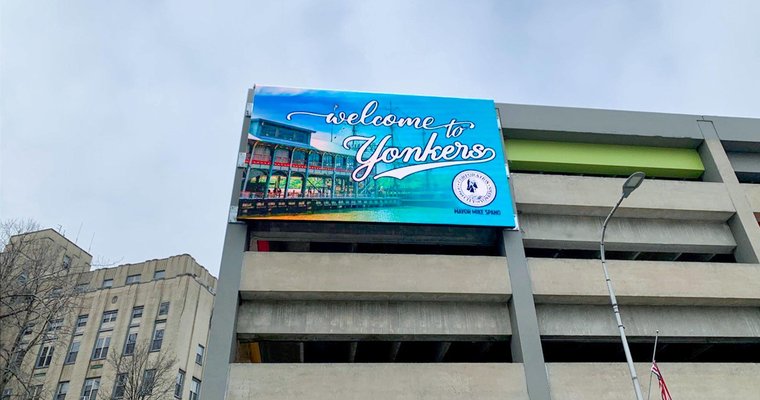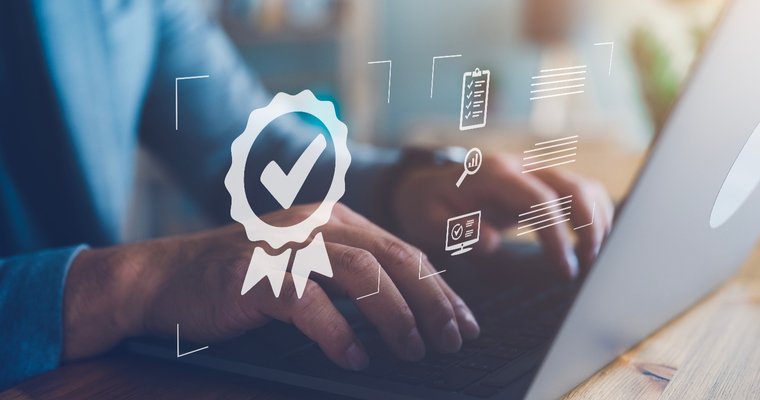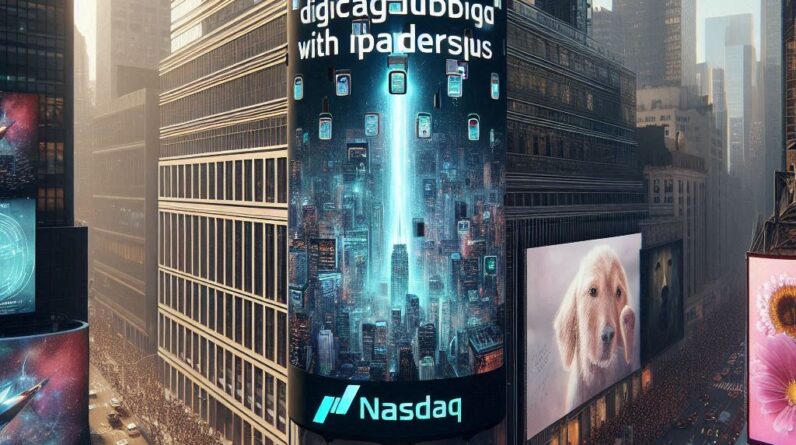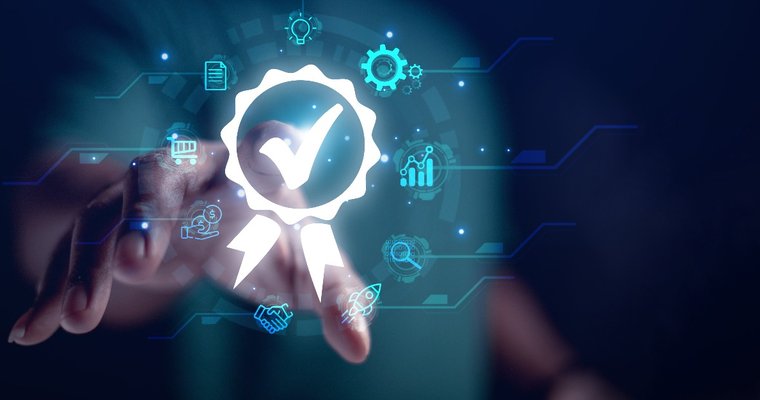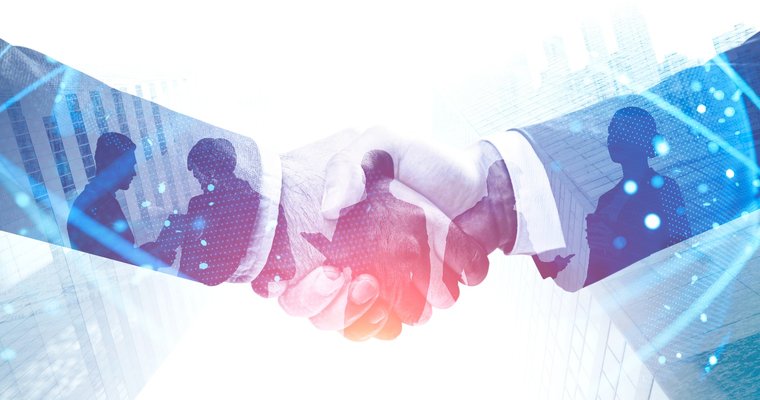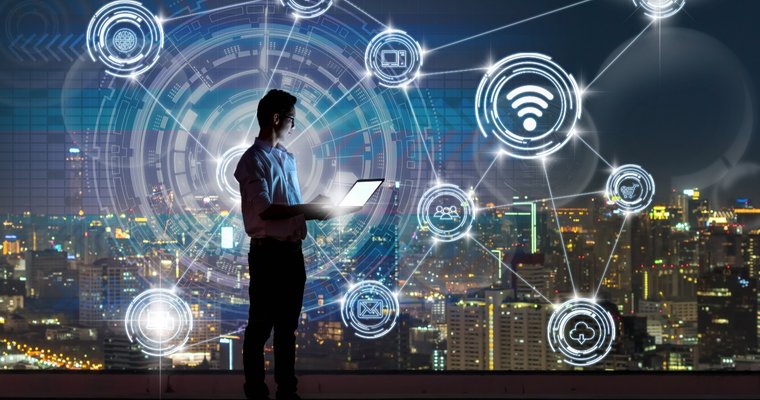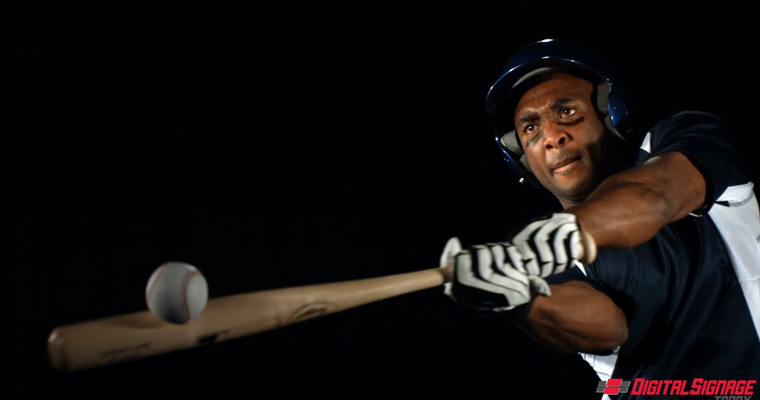
[ad_1]
David Phelps and Donald Szczepaniak joined Digital Signage Today editor Daniel Brown via video link from Samsung Electronics America headquarters to share insights into the growing and lucrative world of digital signage in sports venues.
 Courtesy of Adobe Stock.
Courtesy of Adobe Stock.
In the wake of the Minute Maid Park digital transformation (home of the Houston Astros), Samsung project leaders David Phelps and Donald Szczepaniak joined Digital Signage Today editor Daniel Brown via video link from Samsung Electronics America headquarters to share insights into the growing and lucrative world of digital signage in sports venues, along with advice and lessons learned from various stadium projects (from project bids, installation logistics, weatherproofing, and much, much more).
Including valuable insights for all brands and players, the interview takes a striking turn towards coopetition in the growing ecosystem movement in digital signage and pro AV, along with unique nuggets — while heat is the big engineering challenge most folks think about in these big outdoor projects, a trending challenge has been protecting screens from baseball impact from games and practices.
With AI and global challenges sending more curveballs than a Yankees game, David and Donald share valuable insights to help elevate the industry as a whole, including helpful tips on the trajectory of digital screens in sports and the rising priority of sustainability across industry stakeholders, and the rise of experiences instead of gadgets, the centrality of content to the dynamic digital canvas (compare with the “People over shiny things” ethos of Scott Schoeneberger).
Interview edited for clarity and length. Full transcript available below.
Key quotes
Szczepaniak: “We’re not selling pieces of glass anymore, just like the Astros weren’t just trying to show the score in the center field, right? That scoreboard is not a scoreboard — it is an experiential machine that allows them to help their fans really enjoy the game.”
Phelps: “And one of the great things about working at a company the size of Samsung… if you follow the story back all the way to R&D, the size of Samsung allows us to make major strides in what we can do to make the environment better, like: our factories can become more efficient, the logistics of how we’re shipping our products can become more efficient.”
Szczepaniak: “You know, there are universal themes that transcend companies. Sometimes when you look at those things, the greater good is for the greater good. It also improves your own experience and your own company. So, those are the kinds of universal themes that we all want to look at.”
Szczepaniak: “I think the industry, to get better, needs to start is to continue to think more holistically versus pieces and parts. This industry was very much pieces and parts five, six years ago, and I think all the all the positive and good things that are happening are from people who’ve started thinking in terms of: What is that holistic experience, and how do I make technology part of it without making technology overwhelming?”
Interview Transcript
Daniel Brown: Is this new for Samsung? Or are you really big in the space?
Donald Szczepaniak: So Samsung, Samsung actually reached out and they bought an outdoor LED company in 2015. And it’s about the same time Samsung had decided, correctly so, that they really needed to, you know, make a mark in LED — indoor LED, and micro LED, and things like the wall, that’s all Samsung-developed and, and from the ground up. But when it came to outdoor, they went out and they bought a small company in Utah. And that became Prism View. And so then in the last couple of years, we basically integrated that company into Samsung. So now there’s no longer a Prism View. But there is additional product and services being offered by Samsung, which is the outdoor LED space. So Prism View actually has a long history, in the outdoor LED space, in sports in, in places like Las Vegas and New York, you know, big spectaculars all the way down to out to, you know, Digital Highway billboards, so, so a lot of experience that Samsung bought when they bought that.
Brown: Nice. So that’s even things like I guess, the weather-proofing for various weather events at the stadium and so forth.
Szczepaniak: Yeah, I mean, if you make outdoor LED, you have to, you have to really understand the conditions you’re putting it in. And it’s usually, you know, in a typical highway billboard, right in the middle of Montana, somewhere, it’s operating 24/7 for 10 years in the rain, the snow, the heat, the wind, the hail — and you got to have a product that, you have to understand those conditions and build a product that meets those conditions.
Brown: We just interviewed the Kwik Stop — the head of operations, who, in Nebraska, he said that the weather they see is absolutely insane. It was like nothing the integrator had ever seen before. He was like, ‘Oh, this is a Tuesday.’ So can you fill me in a little bit? I’m trying to educate myself. And I know, some of our readers are mystified, you know, I see terms like I think IP86 ratings and all this different — dust, and — how do you know if a system is actually good for all weather conditions?
Szczepaniak: Yeah, I mean, they’re the IP ratings are important. And often, they’re part of the requirement by either the consultant or by the, by the stadium authority itself. But it also, I mean, it’s why there’s not, it’s why there’s fewer people in the outdoor LED business that do sports, is you have to really understand how to protect the product from, like I said, from all the elements — sun load, heat, cold. And so, you have to have experience in the product. It’s even beyond the IP rating, you have to have experience in the product that allows you to operate, and operate flawlessly, operating 24/7 for ten years.
David Phelps: And, Daniel, something, somewhat related to what you’re asking: a big thing that Don dealt with last year at Citi Field with the New York Mets was actually impact from batted balls. So, when the Mets or the opposing team was taking batting practice, we got some pings from the Mets early in the season, like, ‘Hey, we just had our — two of our hitters just blasted the ball off your signage. So what are we going to do to make sure that doesn’t happen?’ So that’s, you know, not necessarily weather related. It’s another sort of factor that you don’t see if you’re putting a LFD in a conference room. You know, there are many more variables in this in this vertical
Szczepaniak: In the sport space, you know, that’s relatively new in sports. You know, people are trying to bring those, that signage and that experience, closer and closer to the field and closer of course to the fans. And so, when we did baseball stadiums five years ago, we didn’t really concern ourselves with balls hitting the hitting the signs because they were up, they were up — they were a scoreboard fifteen feet in the air, two hundred fifty feet from home plate. Well, now they’re a lot closer and Phelps is exactly right. It was it was an interesting few weeks as we figured out, ‘Well we know how to protect it from sun, and from wind, and from rain. How about a rawhide baseball going 110 miles an hour?’ That was a new one for us.
Brown: How do you protect a screen — and make it bright enough to see — from the sun? How do you protect it from impact, from water, from moisture, from dust — like, how on a physics level does that even work?
Szczepaniak: So there’s a variety of things right? There’s plastic in the front that that provides contrast but also provides protection. The components themselves in many cases are you know, like the power supplies, they have to be, they have to be rated to be outside; or, you have to enclose them in something and make it waterproof. And so, there’s really two basic theories or approaches: you can take everything and stick it in a box and make sure the box is watertight. Or you can make sure that the individual components or the groups of components are themselves watertight or, are enclosed in that way. So, it’s two different approaches. And you know, depending on the manufacturer, they use one or the other. Usually if it’s waterproof, and then the other thing you got to worry about is just to make sure that it can handle heat, you know, that it can handle heat and cold.
Phelps: You know, it’s not so dissimilar. I don’t know if you’re a fast-food person or not. But if you were to go to a McDonald’s or Burger King, many other chains, it was just obviously the big ones. If you go through the drive thru, you’ll see Samsung LFD, in an enclosure, protected from the elements, including heat at almost every, almost every McDonald’s and Burger King in the country. So, it’s essentially a black box surrounding that normal signage that you’re used to seeing.
Brown: That’s amazing. And I’d imagine as extreme weather events start ramping up as well, we’re seeing statistically that’s going to come ever bigger in all digital signage, that weather proofing.
Phelps: It is — and from my experience is not the rain and the snow, it’s the it’s the hot and the cold, especially heat. You know that there are challenges, sometimes with areas of the country that can get to 120 degrees in the indirect heat plus, when screens are black, they draw more, they draw more rays from the sun. So, it’s something we’re always working on, we have a service team, that’s always available for post sales to make sure that, you know McDonald’s in Flagstaff, Arizona is fully functional with their menu boards, a baseball stadium or a football field would be no different.
Brown: But is this a passive cooling heat diffusion thing do you use fans? Like what kind of things are the industry using?
Szczepaniak: Both, you design the components to basically bleed off heat because you want to try to make sure you keep it as cool as possible. Just a lot of there’s a lot of tech, there’s a lot of tech in terms of passive, but fans are our best friend, when it comes to certain environments and certain parts of the country. Yeah, in many ways, many times you have to use both. So, you know, in Minute Made the some of the LED that we used has passive cooling, and some of it has fans, depending on the application and, and the type of product we put in.
Brown: Just out of curiosity, in broad terms, roughly what would be the operating temperature range of a standard, just standard, LED, for example, and then a weatherproof LED? Like, what’s the difference?
Szczepaniak: Yes, well, in terms of standard, I, you know, 85°C, but we usually have to make sure that you know, and I’m pulling this from my head, which means that the chance that it’s actually accurate as, might be, might be a little wrong — but, like 140°C that, I mean, we have to be able to, some of the parts we have to be able to operate really hot because it’s not just the temperature outside, which is a big contributing factor. But remember, these LEDs — whether it’s an LED or whether it’s an outdoor menu board — they’re black, because black gives you great contrast, but black also absorbs sun and heat load, sun load, like crazy. So, they actually get a lot hotter even than the ambient temperature. And so, these products have to be able to withstand that, you know, and so we test it to that to make sure.
Brown: Where does sustainability fit (and ESG) in Samsung?
Phelps: Globally, we have sustainability measures. And even from a PR perspective, it’s something we’re making the world aware of, frankly, it’s hard to find a company, especially in technology now that’s not focused on this; especially as, you know, now, for example, I used to be just a single guy running around didn’t really think about 50-100 years from now. Now I have a couple little kids and I wonder, you know, what’s their world going to look like in 50 years? So, you know, without getting into all the details, it is a top priority. At our CES press conference it was one of the main things that was talked about and will continue to be — not only getting carbon neutral, and some of the things like that — but how can we work with our partners so that our overall solution not just the Samsung piece, but everything that we’re doing, going to market with — McDonald’s, the Houston Astros, whoever — is aligned on that same focus on sustainability.
Szczepaniak: Yeah — so, it can go from things like making sure that our latest iteration of outdoor product uses 30% less electricity, than the previous product, right? That’s one way to drive it. But even down to — and this is at CES, you know — the latest Samsung TVs on the consumer side, they come built with a solar panel. So that, the idea here is, if you can keep people from having to put batteries in something every six months, that’s sustainable, reduces waste reduces all those things and you’re using the sun. So, I think — is it every? I think it’s almost every Samsung TV?
Phelps: Yeah, I bought a new TV a month ago, and it’s got a solar remote.
Szczepaniak: They all have a solar remote. The idea is, using a minimal amount of effort, put it on a windowsill for half an hour once in a while, you never really have to put batteries in it, ever.
Phelps: And one of the great things about working at a company the size of Samsung is, you know, we’re essentially just a go to market subsidiary, like, you know, I’m dumbing it down. But we’re all kind of salespeople here, whether it’s Diane, myself, Don, we’re here to sell product. But if you follow the story back all the way to R&D, the size of Samsung allows us to make major strides in what we can do to make the environment better, like our factories can become more efficient. How we’re — the logistics of how we’re shipping our products can become more efficient. So, you know, if you get big brands like Samsung to lean in on, you know, being eco-conscious, and all sustainability measures, you know, that can make a big difference.
Szczepaniak: I’ll give you just one last thing on that, because I know it’s a big, big subject for you, if you bought a TV five years ago, and you remember what the packaging looked like, buy a Samsung TV today. The packaging is you know, there’s an absolute effort to use recycled packaging to reduce things like styrofoam and those kinds of things that are tough on the environment. And they put a lot of effort and, frankly, there’s a lot of money invested into, how do you ship a 65-inch TV, protect it, and not have to do the kinds of things that were considered normal five years ago?
Brown: Well, and it sounds like one of the messages I’m taking away from this and many events I’ve been to, experts I’ve talked to — the data is now showing, it’s not mutually exclusive to try to do the right thing and also make profits. It turns out as you’re doing the right thing, you’re also going to make even more profits, maybe, like, you can do both. Would that be fair to say in this industry?
Phelps: Yeah, I think so I think you know, there’s an initial increase in the R&D costs of making, making packaging, you know, more efficient, you got to do the research, figure out how much can the styrofoam hold, and you don’t want to have an issue or all of a sudden your concealed damage is up to 20%. And it used to be 1% in the old packaging, but once you get that figured out, and you’re using less cardboard, less Styrofoam, it’s easier. So instead of fitting 1,000 65-inch TVs on a vessel, you’re fitting 1200 now because they’re all more narrow, that sort of economy of scale, or whatever you want to refer to it as, you know, we should benefit from that for years to come. And the good news is our competitors, you know, LG and others, are doing the same thing. So, regardless of you know, the competitive sort of day to day battles we have with them, it’s a focus for everybody. So we all benefit.
Brown: Can you tell me more about this word I learned on the road to, I think was Austin, Texas, and then Louisville a few weeks ago, coopetition, I’d never heard that word before. And then we start we did a review of Kamales Lardi’s new book, she’s worked with Google, lots of big companies. Coopetition, this idea that the new business world and technologies like this, it’s an ecosystem. And yeah, people compete, but it’s almost in a friendly way. And the industry is helping each other. I don’t even know how to put it into words. It’s so new to me. What is coopetition? And have you all seen it in action?
Phelps: Yeah, so again, this is one we won’t get too deep into, because a lot of this takes place, you know, far, far in advance of us getting products. But a very simple example would be: there are monitor screen sizes, which are a part of our display business that the Samsung Display company does not produce panels for. So we would in that case, buy the panel size we need from a competitor, many of which you know the names of and vice versa. So that, I would definitely say, is coopetition; we get a size we couldn’t have had otherwise, and they sell more panels. That is, I would say, the simplest example. Now, that doesn’t mean when it comes down to bidding on the Houston Astros and trying to win that business versus a Daktronics, or some of the other brands, that we’re not rolling up our sleeves, again, super scrappy, and doing whatever we can to beat them. But, you know, we have a lot of similarities with some of these other companies, and we can learn from each other. You know, a lot of people here have come from other companies. I think Diane came from one of our main competitors a few years back. And so, there’s all sorts of parallels and similarities. And for me, you know, I really don’t think it’s, it’s a negative. I, you know, competition brings out the best in both sides, hopefully. And at the end of the day, whether it’s an end user on the B2B side or consumer on the B2C side, that’s who really should benefit from it.
Szczepaniak: You know, there are universal themes that transcend companies. Sometimes when you look at those things, you know, the greater good is for the greater good. It also improves your own experience and your own company. So those are the kinds of universal themes that we all want to look at.
Brown: Now with this Minute Maid story. Can you kind of steer me, because I’ve never seen this in action, like, how does even the bidding process work? From the very start? How do you ideate each step of the way? How do you implement, like, how does that work?
Phelps: So just mechanically, how it works here is we have, we have a group of salespeople, they help uncover opportunities. They would have interaction with both Don’s team and the end user, in this case, Houston Astros, to figure out like, what is your dream. So, Minute Maid — world series champion multiple times in the last few years, they wanted to make a statement in their outfield, their perfect scenario would have looked like X, they challenge us to come back with what we can do to meet that request. Now we work internally to say, you know, here’s Scenario A, B, and C. Scenario A might be $100 million, and then work down for B and C. We do the best we can to deliver on their highest expectation at a number that makes sense for us. And then ultimately, and I’m leaving out some details, but ultimately, they get a bunch of bids. They generally have a consultant in place who will say, you know, I’ve worked with Samsung, this, they’re great to work with, this looks really good, or vice versa, they might dislike working with Samsung (hopefully not!) but, and then between, in most cases, between the end user and the consultant, they lay all these out, analyze what they think makes the most sense. And then they pick the brand that they’re gonna go with. One caveat, and an area that we generally benefit from, is: we truly believe we’re, you know, world class in terms of supply chain, we, in most categories, we own supply chain from A to Z, we have factories all over the world. But coincidentally, for us, we have one in Mexico, so our lead times can be a little shorter, we can react quicker, we can you know, in the Houston Astros case, I don’t think they visited our factory, but we always make that offer to come, you know, come see where your stuff’s being built, the efficiencies, the cleanliness, all that other type of stuff. So, all that is, you know, some of that’s more on the periphery, then, at the end of the day getting a piece of paper and saying alright, it’s the X million dollars, and we want to do it. But that that’s kind of the flow of the business. And then you know, Don could jump in and give you a lot more detail.
Szczepaniak: Yeah, and let me take something it’s been really interesting. For five years, you know, in this business and, and really where the business is going, really suits Samsung. So, you talked about it at the beginning, right? You know, that was, you seem to think that so many years ago, one company owned a market, but Samsung has more pieces of glass, more different kinds of pieces of glass, than anybody else than anybody else in this business. Right? Everything from one inch square that you wear on your wrist to 90,000 square feet at SoFi hanging from the yard line. Right. So, and everything in between. And I think you know, when we talk about like the Houston Astros? Yes, it can be a bid process. But often we walk in from a consulting standpoint, and to Phelps’s point, really dive into, what do they want to do? What kind of experience do they want their fans to have? You know, how can we create these moments of exclusivity? Or how we can we create a situation where they can, they can change the feel, and the experience for the fans simply by what they put on their screens, when they put it on, and what message they’re giving. And so, it sounds very squishy, right? Touchy feely. But in the end, what we what we’re selling, we’re not selling pieces of glass that come in, we’re not selling pieces of glass anymore, just like the Astros weren’t just trying to show the score on the in the centerfield, right? That scoreboard is not a scoreboard — it’s an experiential machine that allows them to help their fans really enjoy the game. And so, because we have all these pieces of glass, we can talk to them about what do they want to do, right? And, and what’s happened is, it’s not just the hardware, but the hardware and the software as combined. If you go to a game today, particularly like in the NFL, or the NBA, you know, they use those pieces of glass to really change the mood and the temperament and the experience of the fans. And that becomes like a digital canvas much, much more so than, than something that’s just displaying information about who scored what, and who’s at bat.
Brown: What do you think is the secret, and I love the way you phrase that, because we had a great conversation with Chris Devlin over at Omnivex about similar things, creating a dynamic digital canvas. And I’ve heard at many events, a lot of experts saying, Look, stop selling products, start creating experiences. I don’t care if it’s retail, I don’t care if it’s sports, I don’t care if you’re in a school, you know, lecture hall at a university. How do you create a captivating experience and how does the industry pivot towards experiential mindset, if you will? Well, I
Szczepaniak: Well, I think I think the first place that did that — it was very practical. The Jets and the Giants share a stadium, the Rams and the Chargers share a stadium. And if you’re that team, the last thing you wants to walk into a stadium, if you’re the Chargers, and the stadium still look like it’s the Rams’ stadium, right? You know, you want your own team, you want your own colors, you want your own advertisers, you want your own partners — and digital products and displays make that so much easier. You know, there are teams, and I mentioned the Jets and the Giants, where every Sunday there was a team of people that are scrambling around the stadium, pulling off static signage from the Jets and putting it up for the Giants, and then two days later taking it down again, right? So those kinds of things, you know, those teams are always the ones looking for, how do I make that experience unique? But also, how do I make it easier for me to do that.
Phelps: And Daniel, just to jump on that one more note, and the entire industry benefits from this, this isn’t just a Samsung thing. But when you’re talking about the owners of sports teams, you’re talking, truly talking about some of the most successful people in the world, like, from a wealth perspective. Like, maybe they’ve created a business, you know, taken bets on themselves. And now they’re, they can afford the state with these franchises — which, the most recent, I think the Washington Commanders just sold for $6 billion, the Broncos sold for $4.5 billion last year to the family that owns Walmart, or at least some of those people. So, it’s an ego driven sort of thing. So, it also has become a bit of an arms race, like, you don’t want to come to Citi Field and see the biggest scoreboard in major league baseball for the Mets, and then announce to your team or to your fan base that you’re putting in a new scoreboard too, and it’s 1/10 the size of what’s in Citi Field, like so, there is the ability from, you know, to play to the egos of some of these owners. And frankly, they the ones we’ve interacted with have been very supportive. They, they want the best sort of experience for their fans. And a lot of times that means digital signage, and I think for personally speaking, not that you asked, but my favorite stadium in the country at this point is where the Raiders play in Las Vegas, I think the design of the stadium, the look and feel of it inside and out, not just the signage, the colors, I mean, it’s I just think it’s a 10 out of 10 the way they the way they did that stadium, and we were fortunate enough to be a part of it — I would say that if it was Daktronics, too, if it looked exactly the same. But that ownership group now can, you know, pound their chest a little bit and say, arguably, they have the best stadium in the NFL, and the next one’s the Buffalo Bills are coming, the Tennessee Titans are coming in the next three to five years, there’s a high likelihood that that they [will] now have the best stadium. So, that part of it is pretty cool because they’re challenging us to come up with solutions so they can say, oh, that’s never been done before in the NFL. That’s what we want. And then we challenge our world class R&D team in Korea, and hopefully we can come back with something that that wins us the opportunity
Brown: Do you think that this kind of arms race is one of the factors that helps bring about the next generation and next iteration in the industry? Like, it’s almost like the Space Race in the 60s, right, with — microwaves were invented, and so forth?
Szczepaniak: I think so, I think it’s that and, you know, these new owners, they’re very, hyper-successful, most of them are not afraid to take risks, most of them are not afraid to really think deeply about doing something different than doing the same old, same old. And so that helps in itself, whether it’s bigger or brighter. The fact that they’re really thinking about, again, this idea of experience, about how they transform the experience for their fans. They use every they use every tool at their disposal, video, and audio happen to be a big part of that. But they use every tool at their disposal to make sure that their fans feel like they’ve been transformed from sitting on a wooden seat, like I said, watching the score change, to something much, much more immersive.
Phelps: And I think, you know, when you’re talking about that level of wealth, anybody with billions can go buy a yacht, or go buy their 10th home. There is a finite number of professional sports teams in the world that you know, the number rarely changes that you know, 30, 32 NFL teams, 30 or 32 Major League Baseball teams. Once you become the owner of that, I imagine you never want to let it go, and you want to be able to say to your fans, we have the best experience in sports. Now there’s anomalies, like some stadiums are just very old and traditional, like a Wrigley Field in Chicago or Fenway in Major League Baseball, where they don’t necessarily need to make the same investment because the stadium kind of sells itself, but all these newer franchises with newer stadiums or plans to convert to new stadiums, they’re trying to deliver a digital, super high-quality experience for their fan base. Because at the end of the day, whether the team is good or bad, if the experience in the stadium for kids and for you know, people going on dates and older couples that are trying to have a great night out, that’ll keep people coming back.
Brown: And, not to get too woo, but kind of like — Don, to your point — it really does make the world a little bit brighter in a weird way. This is an industry that brightens people’s day.
Szczepaniak: Yeah, absolutely, absolutely. You know, again, it’s not just experiential, it’s positive, impactful experience, right. And I can have an experience that a stadium that could be negative, right? The parking’s bad and things like that — but really, how do you impact it in a way that people go, ‘That was the best part of my month, was going to that game?’
Brown: I had a Red Sox joke that I’m gonna hold back so I don’t offend anybody. We’ll just tuck that down inside.
Phelps: I’m a Yankees fan — so, Diane and I are Yankee fans, so you can bring it out.
Brown: [Laughs]. Next time, I might be bold. If you guys had one piece of advice to close with, because you’re very experienced from the industry, how can the industry get better? Whether it’s accessibility, sustainability, DEI, technology, content, you name it? Like what’s the burning thing the industry needs to hear?
Szczepaniak: I think the industry, to get better, needs to start is to continue to think more holistically versus pieces and parts. This industry was very much pieces and parts five, six years ago, and I think all the all the positive and good things that are happening are from people who’ve started thinking in terms of: What is that holistic experience, and how do I make technology part of it without making technology overwhelming?
Video Credits
Guests:
- David Phelps, Vice President of Product Management, Samsung Electronics America.
- Donald Szczepaniak, Vice President of Service Delivery, Samsung Electronics America.
Interviewer, video production:
Daniel Brown, editor, Digital Signage Today.
Interview recording courtesy of Networld Media Group/Daniel Brown/Samsung.
Stadium images courtesy of Samsung.
Stock video, thumbnail courtesy of Adobe Stock.
Created with Adobe Premiere.
Transcript created with help from Otter.ai and checked by editor for accuracy and readability.
©2023 Networld Media Group. All rights reserved.
Daniel Brown is the editor of Digital Signage Today. He is an accomplished technology writer whose experience includes creating knowledge base content for a major university’s computing services department. His previous experience also includes IT project management, technical support and education. He can usually be found in a coffee shop near a large pile of books.
[ad_2]
Source link

